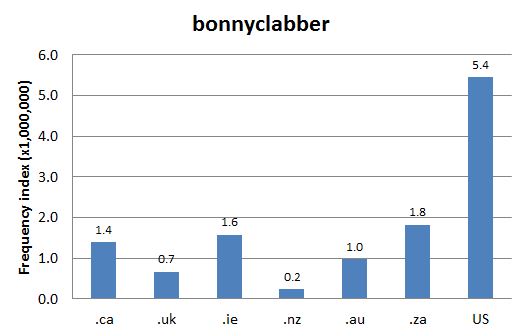DCHP-2
bonnyclabber bonny-clabber, Atlantic Canada DCHP-2 (November 2016)
Non-Canadianism
n. — Agriculture, obsolete
thickened and soured milk that is usually sweetened.
Bonnyclabber is a preservation from British or Irish English, where it is attested as far back as 1631 (see OED-3, s.v. "bonny-clabber"). The term has also been preserved in the US, where it has the highest prevalence (see Chart 1) and is found in DARE with a quotation from 1731 (see DARE, s.v. "bonnyclabber", which is marked "esp NEng and chiefly N Atl"). However, the term is used widely in Inner Circle Englishes (see Chart 1), and is not a Canadianism as defined in Dollinger (2015c).
See also ITP Nelson, s.v. "bonnyclabber", which is marked "Maritimes, New England & Central Atlantic U.S.".See also: Bob's your uncle
- Inner Circle: see the explanation at Bob's your uncle.
References:
Images:
Chart 1: Internet Domain Search, 9 Oct. 2013
